The post The Best Songs of the 2010s: Swale, “If You Get Lost” appeared first on County Tracks.
]]>
In my years as a music publicist, I learned how difficult it was to get one of your artists interviewed on NPR (one of the few press hits that actually might sell some records). At a bare minimum it typically requires new music. Pitching a seven-year old song would get you laughed out of the producer’s inbox.
But listeners to Weekend Edition this summer heard a new segment about a song that came out in 2012. Vermont band Swale joined host Scott Simon to discuss “If You Get Lost.” The “news peg,” such as it was: They’d submitted it to the annual NPR Music Tiny Desk contest. Though they didn’t win, they got one hell of a consolation prize.
The national spotlight came tinged with shadow though. For while Swale has no shortage of upbeat rockers – many of which vied for this list even after I eliminated their latest album from contention (since I already wrote about all the songs) – “If You Get Lost” might be their saddest ballad. Singer Amanda Gustafson wrote it 15 years ago for a friend suffering from heroin addiction. It soon suited other people in her life as well – including her husband and Swale’s co-frontperson Eric Olsen, himself a recovering addict.
The NPR interview fills in those biographical details, but you don’t need the band’s personal backstory to get the gist. Though not a single lyric explicitly references drugs or addiction, the whole story – the tragedy mixed with a glimmer of hope – comes through in the words and in Gustafson’s singing.
She concludes the interview by saying, “Over the years, I’ve had many people to sing this song for… I think, unfortunately, we’re going to continue to have to find ways to honor this heartbreak.”
Postscript: “If You Get Lost” might be a tougher listen than most of Swale’s music, particularly for anyone with their own history with addiction or addicts. So I’ll add a much louder – and, perhaps in this context, cathartic – bonus track, one of the band’s other best songs of the 2010s:
Check out more entries in our month-long series on The Best Songs of the 2010s.
The post The Best Songs of the 2010s: Swale, “If You Get Lost” appeared first on County Tracks.
]]>The post The Best Vermont Albums of 2017 appeared first on County Tracks.
]]>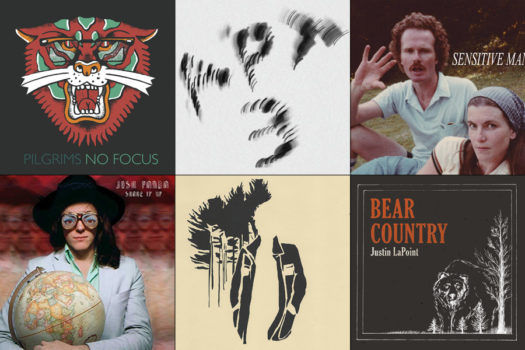
After counting down the Best Songs and Best EPs last week, our year-end look back comes to a close with the Best Vermont Albums. This list could easily have been twice or three times as long, but for the sake of concision – and offering a brief scene intro for outsiders – I limited it to ten. The cream of the crop, the albums with not an ounce of flab or filler.
Genre-wise, they run the gamut, from instrumental bass funk to snappy power-pop, from horn-flecked Americana to roaring slacker-punk. Some tackle current events with wit and insight. Some focus more on chilling, eating sweets, or doing laundry. The only unifying characteristic here is quality.
10. Aram Bedrosian – A Dark Light
To be frank, an album of funky bass instrumentals sounds awful. You imagine a dystopia where the Seinfeld theme runs half an hour long. What makes Bedrosian’s new album work are not his technical abilities – which he has in spades – but his gift for melody. Over ten tracks, he conjures sweeping soundscapes, bringing out sides to the bass the casual listener may not have known existed.
9. The Snaz – Sensitive Man
The Snaz disbanded earlier this year, which is a shame because the quartet was just hitting its stride. The School of Rock novelty of a band featuring high school kids had long since worn off, and what remained was a damn fine rock band for any age. Main songwriter Dharma Ramirez has a way with a hook, churning out insanely catchy power-pop nuggets like “Summer Underground” and “Strung Out on Candy Bars.”
8. Justin LaPoint – Bear Country
It’s the little touches that make this one something special. Like the muted trumpet that fades in two-thirds through the 1970s Laurel Canyon-channeling “Drive.” Or the high-and-lonesome fiddle sawing over the top of the woodsy stomp “Dead Man Walking.” LaPoint’s songwriting is airtight already – amazingly so for a debut record – and the flecks of magic producers Yasmin Tayeby and J. Luke Young add pushes it over the top.
7. Liam Dailey – Get It When You Can
“Is this Frightened Rabbit?” my wife asked when I played Liam Dailey’s new album. Not a bad guess. Dailey may have that thick brogue, but he shares the band’s melodic smarts and way with a massive chorus. His new album offers a modern update of a retro sound. “Down To The Graveyard (Part I)” sounds like a catchy spin on an Irish murder ballad, while “I Have Seen the Angels” could be Ed Sheeran covering an Appalachian folk song. In an era where Vance Joy can tour with Taylor Swift, Dailey’s sound is well positioned to blow up.
6. Josh Panda – Shake It Up
We named “After the Smoke Clears,” an early single from Josh Panda’s new album, the best song of 2016. Luckily, the rest of the album lives up to that very high bar. From to the Stax-tinged “We’ve Come Too Far” to the southern-rock ballad “Angel,” Panda explores soul, country, and rock and roll across ten taught and hook-filled songs. He gets political on “Guns” and the LGBT anthem “Stick a Fork in Me,” which he first released in 2015 after same-sex marriage became the law of the land.
5. Apartment 3 – Apt. 3
Like the Snaz, Apartment 3 recently announced their breakup. And they’re going out like the Sex Pistols: with a perfect record of one killer album. Their sound sounds like Johnny Rotten drinking cough syrup though, loud as hell but hazy and warped. Whispers quickly turn into screams, and if a guitar starts out palm-muted you know it’s only building towards an explosion.
4. The Pilgrims – No Focus
The dumb-joke song titles on this garage-rock quintet’s third album don’t inspire much confidence. “Fuckuitude,” “Treap Chick,” “The Millennial Whoop” – and that’s just the first three. But the wiseguy attitude belies some serious pop smarts. Channeling Thin Lizzy and T. Rex, the Pilgrims roar through ten insanely hook-loaded rock jams.
3. Jinxbox – Relief
On paper, the lyrics of Jinxbox’s debut album read like Nine Inch Nails, full of anger and depression and self-loathing. But the music is much sweeter, a dreamy meander through the Cocteau Twins and Mazzy Star catalogs. Singer Zara London-Southern’s voice floats easily above it all, providing more than a spoonful of sugar to help the darkness go down easy.
2. Henry Jamison – The Wilds
All signs point to Jamison as Vermont’s next breakout artist. Six songs from this debut album already top a million plays on Spotify. His breakout, “Real Peach,” is sitting at 22 million as I write this! It’s a remarkable success story, and it couldn’t have happened to someone more deserving. Jamison looks the part of the bearded acoustic strummer, and if you see him live you might get some of that. But on record, he brings in delicate electronic production flourishes that bely the “singer-songwriter” stereotype. Like Prince or Stevie Wonder, he does it all himself, blending finger-picking with synthesizers, programmed percussion loops, and complex string arrangements.
1. Swale – There’s No One Here
This double-album magnum opus not only showcases the best of Swale, it showcases the best of just about every prominent Vermont genre: rock and roll (“Release Your Records”), Americana (“Burnt Anchor”), pop (“Elevator”), punk (“Drug Laws”), experimental (the nine-minute epic “Every Last One of Us”), and more. Swale long ago solidified their status as the state’s favorite hidden treasure, a band beloved by locals that rarely tours outside the Northeast. It’s tempting to hope a record this good breaks them out nationally, but really, it doesn’t matter. Swale is in it for the long haul either way. Whether or not they ever get that elusive “big break,” people will still be discovering and loving this record for decades to come.
Catch up on The Best Vermont Songs and The Best Vermont EPs of 2017.
The post The Best Vermont Albums of 2017 appeared first on County Tracks.
]]>The post The Best Vermont Songs of 2017 appeared first on County Tracks.
]]>
Holy moly, Vermont artists released a lot of songs this year. I’m just talking sheer quantity: a lot of songs.
This may seem a blindingly obvious observation, but here’s why it struck me. When this site launched this past January, we posted Best Songs and Best Albums of 2016 lists to kick things off. The twenty selections on each were just things I’d come across in the preceding twelve months. This year, though, I made a more concerted effort to be thorough. All year I was trolling Bandcamp and Soundcloud and YouTube and Facebook, which drove the point home for me. I already knew Vermont musicians were prolific, but dear god. One songwriter alone released 36 double-sided singles!
The point being, narrowing this list down to twenty songs was brutal. That’s a testament to the bounty of great music coming out of Vermont. Some of my selections come from bands known to any Vermont music fans; others are by musicians not really plugged into “the scene,” off on their own somewhere releasing amazing stuff. There’s no overarching theme, and in a different week, this list would probably change. But these are my favorite local songs of the year – today at least.
20. Kelly Ravin – Telescope
The most prolific artist on this list, Kelly Ravin has released four albums in as many years, every one a gem. The high point on the former Waylon Speed guitarist’s newest, Engine, is this laid-back country rocker. And as with many of his songs, an easy-going sound hides layers of depth. What seems like a love song at first suddenly starts talking about 22-gauge shotguns and Maltov cocktails. Puzzle out the story behind the lyrics, or just choogle alone with the tunes.
19. Jessica Rabbit Syndrome – Vocal Fry
This is the first of two songs on this list about the very specific topic of millennial vocal tics – was there something in the air? Jessica Rabbit Syndrome rebrands the oft-mocked “vocal fry” not as a ditzy affectation but as a feminist rallying cry. “That’s just how girls talk,” they intone with a confidence that asks: what are you going to do about it, huh?
18. Blowtorch – Mirror
It took punk-rock lifers Blowtorch thirty years to finally record an album. A song like “Mirror” was worth the wait. Like a 1970s CBGB staple, they pack a mess of hooks and riffs in under two and a half minutes. Hopefully we won’t be waiting until 2047 for the follow-up.
17. The Mountain Says No – I Know, Right?
The phrase “I Know, Right?” sounds like a valley girl cliché, a relic of the Clueless era. Somehow, though, I doubt Alicia Silverstone’s character was listening to music like this. Stoner riffs collide in a heavy post-rock blast with furious guitar duels that build and build. If there’s a ’90s movie scene that really fits here, it’s Wayne and Garth headbanging away.
16. Eastern Mountain Time – (If You’re Missing Me) You Ain’t Missing Much
When I wrote about Eastern Mountain Time’s new album, I focused on the complex historical explorations of “Berlin After The War.” But after more listening, this far simpler number has surpassed it as my favorite song on the album. Sean Hood writes a classic country crooner that could have been sung by Patsy Cline or Ray Price decades ago. It’s cry-into-your-beer music of the best sort.
15. Bison – Everything You Say and Do
Interpol fans lamenting that they never again matched Turn on the Bright Lights would do well to turn to Bison. The trio emerged fully formed with this debut single, a monster jam that channels 1980s post-punk with a modern sheen. Hooks pile upon hooks; there’s no question it will get stuck in your head, the only question is which part.
14. Jack Labbe – Plastic Rose
Many songs have been written about flowers over the years: “Wildflowers,” “Kiss from a Rose,” “Build Me Up Buttercup”, etc. The flowers in question though tend to be, you know, alive. Labbe was inspired to write about fake flowers when he kept one after a party. “No one swoons over a plastic rose – real flowers are much more desirable,” he told me, “but the plastic ones stick around.”
13. Josh Panda – Drive You Home
Josh Panda can hit notes that would make an opera singer blush. For such a powerhouse, though, his songwriting can be surprisingly unflashy. “Drive You Home” is the simplest of love songs, but one executed to perfection. The car motif carries shades of Bruce Springsteen, but with a restraint and calm absent from the Boss’s highway narratives. It’s not a song that reaches out and grabs you; it just sits patiently as you return to it again and again.
12. The Pilgrims – The Millennial Whoop
Remember how I said there were two songs about millennial vocal tics? Here’s the second. And like “Vocal Fry,” the Pilgrims use the so-called “millennial whoop” to make a larger point. Theirs doesn’t concern ageism rather than sexism. Narrated by a cranky boomer, the hilarious song defends the younger generation against their elders’ clichéd attacks. “You’ll never live up to the greatest generation!” the narrator yells, cheekily adding “We won all the wars! (The ones that we lost are not our concern).” It blows a raspberry at the idea that one generation can be “worse” than the next and nostalgia that keeps people living in the past.
11. Pete’s Posse – Be the Light
Everything about Pete’s Posse, from the name to the facial hair, screams old-timey. And this beautiful song, too, sounds like a folk staple that’s been passed down by generations of plowmen. But it’s actually an original, a new standard that will hopefully be passed along by generations to come.
10. jinxbox – Sun
The fastest song on Jinxbox’s fantastic debut album barely reaches midtempo. Electronic music, maybe, but good luck dancing to it. A slow sway like Audrey in Twin Peaks might be more appropriate. And just like the moth-frog climbing into the sleeping girl’s mouth, “Sun” will slowly but surely get stuck in your head.
9. Lewis Franco & the Missing Cats – Don’t Fix It
Cell phones breaking sounds like the topic for a Dave Berry column, not a novelty jazz song. But the musicianship here is no joke. Blending a little Dean Martin with a little Richard Cheese, Franco crafts a catchy lounge-swing earworm complete with 1950s-style backing girls remarking on the lyrics. Even once you stop chuckling at the punchlines, you’ll keep humming along.
8. J Bengoy – So Good (I Could Die)
I called this the song of the summer, but turns out it works just as well in December. So much in music and culture more broadly this year revolved around politics and current events. Worthy topics these days, no doubt, but occasionally it’s nice to take a step back with a slice of optimistic escapism.
7. Henry Jamison – The Jacket
Like a good short story writer, Henry Jamison nails the little details that make his songs feel lived in. Take the opening of the second verse: “I was on my phone for half an hour and bleached in the white light glare / Sitting at the sports bar ’cause the game was playing there / And the hometown team was down by 10 / But I really didn’t care / I just soaked up all the light from the flat screen.” That simple scene says so much about the narrator’s emotional state. A character study set to music, “The Jacket” makes every word count.
6. Vazy – The Field
To outsiders, Vermont gets stereotyped as some sort of bucolic hippie paradise. Brad Veysey tells a very different story in his rhymes. He describes how the opioid crisis has affected his hometown in no-holds-barred detail, blending hometown pride with a requiem for neighbors dying young. His old duo Causin’ Effect explored some of the same themes, but with about as much nuance as song titles like “Redneck” imply. This is a much more incisive look at some serious problems.
5. Swale – Felon
Swale’s There’s No One Here is so wall-to-wall great, it was tough to pick which song to highlight. The furious punk “Drug Laws”? The #MeToo pop of “Elevator”? The epic guitar freakout “Every Last One of Us”? If I didn’t limit this list to one song per band, they might all be in here. Ultimately, a quieter song snuck in as a favorite: Amanda Gustafson’s tender “Felon.” Like much of the album, it was loosely inspired by her marriage to co-frontman Eric Olsen. “Eric’s been pretty open about his past, with drugs and alcohol and addiction,” she told me. “When we got together, my friends weren’t exactly high-fiving me. But my love for him went really deep, even in the midst of a difficult time, and that’s what I wanted to write about.”
4. Near North – Good About You
“Good About You” could have been inspired by pretty much any song you’d holler along to on classic-rock radio. But it actually derived from a very different genre. For a school writing assignment, songwriter John Nicholls was told to borrow the chords of a current pop song. He picked Anna Nalick’s “Breathe (2 AM).” It’s the best kind of appropriation, turning an insipid adult-contemporary hit into a massive rock-and-roll banger. Wonder what they could do with Demi Lovato.
3. Clever Girls – Crazy
“It ain’t heartbreak unless we’re both a bit crazy” sounds like a classic country line, something that could have come from Willie Nelson’s “Crazy” rather than this one. But the real power comes in frontwoman Diane Jean’s delivery, an open-throated holler that sure enough sounds a bit unhinged. You hear stories about Merry Clayton belting “Gimme Shelter” so hard her voice cracked; I can’t imagine Jean was good for much chit-chat either after delivering this blast in the studio.
2. Sam Morris – Left The Candle Burning
A ton of musicians covered Leonard Cohen following his death, but no one wrote a new song that more embodied Cohen’s spirit than Sam Morris. The fingerpicking on “Left the Candle Burning” sounds Cohen-esq even before the words start, but the comparison becomes unavoidable from the opening line: “I watched the moon unfold itself unto its fullest form.” Trying to write a Leonard Cohen song would be a fool’s errand for most, but against all odds Morris pulls it off. While Cohen went into fuller productions in later years, this sounds like a Songs of Love and Hate outtake – but by a singer who actually was “born with the gift of a golden voice.”
1. Ghost Weapons – Auroras
“What if science has it wrong?” Gary Peters hollers on his final single under the moniker Ghost Weapons. Like a rougher-voiced Interpol, “Auroras” draws on post-punk history for a dark, anthemic blast. And like Joy Division, it uses those huge sounds to explore life’s darker undercurrents – in this case, Peters’ father’s recent death from multiple sclerosis and his regrets missing out on his father’s last good years. Heavy stuff, with heavy music to match. But cathartic, too.
Hear most of these songs collected in this Spotify playlist.
Check out The Best Vermont Albums of 2017 and The Best Vermont EPs of 2017.
The post The Best Vermont Songs of 2017 appeared first on County Tracks.
]]>The post Watch Swale and Madaila’s Mark Daly Cover the Righteous Brothers, Snoop Dogg, and Marvin Gaye appeared first on County Tracks.
]]>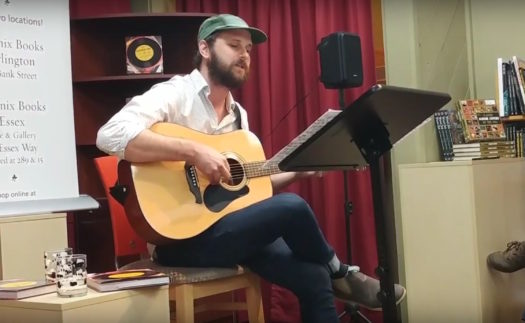
As anyone who read last week’s Best Vermont Cover Songs posts knows, I held an event in Burlington this week to promote my new book Cover Me: The Stories Behind the Greatest Cover Songs of All Time (locals who missed it: I left a bunch of signed copies at Phoenix Books!). And rather than give a dry book talk, I recruited some of Vermont’s finest musicians to cover songs from the book alongside conversation with expert moderator Brent Hallenbeck of the Burlington Free-Press.
I wrote about the event at length over at Cover Me, so here I will just say that both Swale and Madaila frontman Mark Daly delivered some truly amazing covers. Swale kicked off the event with a beautiful acoustic version of “Unchained Melody,” followed by Daly nailing “I Heard It Through the Grapevine” and a “Gin and Juice” both hilarious and haunting. Watch videos of all three below. [Update November 8: Plus a long video of the full thing, including my conversations with Brent]
Buy ‘Cover Me: The Stories Behind the Greatest Cover Songs of All Time’ at Amazon, Barnes and Noble, IndieBound, or – most importantly! – at our host Phoenix Books!
The post Watch Swale and Madaila’s Mark Daly Cover the Righteous Brothers, Snoop Dogg, and Marvin Gaye appeared first on County Tracks.
]]>The post The Best Cover Songs Ever by Vermont Bands: Part 2 appeared first on County Tracks.
]]>
Yesterday we began our list of the best-ever cover songs performed by Vermont bands and singers. The occasion: To promote, ahem, my book party at Phoenix Books in Burlington on November 1st for Cover Me: The Stories Behind the Greatest Cover Songs of All Time. Singers from Swale and Madaila will be there on hand covering songs from the book live!
Speaking of Madaila, let’s continue our list with…
Madaila – How Will I Know (Whitney Houston cover)
When David Bowie passed away, Madaila released a beautiful cover of “Starman.” Which would be on this list – except that few videos are more fun than their live cover of “How Will I Know.” Few singers male or female can match Whitney’s pipes, but Mark Daly’s awe-inspiring falsetto nails it. And – oh did I mention this? – he will be performing a couple brand-new covers at my Burlington book party next month.
Michael Hurley – Blue Driver (Tom O’Neal cover)
In our recent Michael Hurley deep dive, I was far into my research before discovering that one of my favorite Hurley songs was in fact a cover, of little-known country songwriter Tom O’Neal. Part of the confusion stems from Hurley changing the title; O’Neal’s 1963 original is titled “Blue Endless Highway.” The rest of the confusion is that Hurley’s cover so thoroughly sounds like his own compositions, old weird Americana at its finest.
Mountain Man – Around and Around (John Denver cover)
The trio Mountain Man only released one album – 2010’s lovely Made the Harbor – and it doesn’t seem like we’ll get a second any time soon. Several of the women went on to sing backup vocals in Feist’s band, and another moved to North Caroline to form popular duo Sylvan Esso. But earlier this year they re-emerged with a cover of Nazareth’s “Love Hurts.” Now, it’s very possible they just dug out an unreleased nugget from the vaults to contribute to an anti-Trump singles series rather than actually reunited, but I’ll continue to hold out hope for the latter. While we wait, we’ll continue spinning their one album and their best cover, tackling John Denver of all people.
My First Days on Junk – A Little Distraction (The Lucksmiths cover)
My First Days on Junk combines members of several other bands on this list who we haven’t gotten to yet (this being alphabetical and all): The Smittens and Swale. Also Burlington punk mainstays Rough Francis, who probably would appear here too except as far as I can tell they’ve never recorded a cover. My First Days on Junk’s cover of little-known Melbourne group The Lucksmiths falls much closer to Smittens twee than Rough Francis punk. At first, that is. When the guitar symphony erupts forth, all bets are off.
The New Line – Nobody ‘Cept You (Bob Dylan cover)
A Bob Dylan cover played on the mbira – a tiny African instrument that looks like playing musical spoons – sounds like a novelty. Brendan Taaffe sells it though, his beautiful vocals blending over the unusual backing track. The muted horn solo puts this one over the edge.
Old Sky – I Stand Corrected (The Lonestar Chain cover)
On their most recent EP, guitar-and-fiddle duo Old Sky do a gorgeous cover of “Silver Dagger,” the folk traditional popularized by Joan Baez. Which I almost picked, until discovering the tenderly harmonized “I Stand Corrected” on their first EP was also a cover, of early-2000s Vermont band The Lonestar Chain. You don’t need to know the original to appreciate the beauty here.
Peg Tassey and the Carefree Days of Childhood – Dizzy (Tommy Roe cover)
AllMusic dubbed Tommy Roe “one of the archetypal bubblegum artists of the late 1960s,” which is maybe not the most ringing endorsement. But the thing about bubblegum music is – it’s catchy as hell. In this 1989 cut from a cassette-only EP, Tassey and her band strip out the saccharine and turn one of Roe’s biggest hits into a catchy garage gem that sounds like a Nuggets outtake.
Sam Moss – The Relatively Fair (Will Stratton cover)
“All my friends are actors and musicians.” Will Stratton wrote those words, but they’re apparently true for ex-Vermonter Sam Moss as well, as his cover features beautiful turns from other locals. Wooden Dinosaur’s Michael Roberts (more from him soon…) plays electric guitar, Crooked Still’s Corey DiMario plays bass, and Stefan Amidon – Sam’s brother – drums.
Screaming Broccoli – Eleanor Rigby (The Beatles cover)
I’ve long thought the Beatles were one of the most difficult acts to cover. Unlike say Bob Dylan or Leonard Cohen, the Beatles tended to record their compositions perfectly the first time. The only way to really make them your own is to throw in a little irreverence, which Screaming Broccoli accomplish in spades. One of the saddest and most beautiful “Paul songs” becomes a reverb-soaked garage blast in their hands and hollers.
The Smittens – Together Forever in Love (Go Sailor cover)
Having moved all over the country, Vermont mainstays the Smittens are less prolific than they once were. But last year they released one of the best covers of the year on a tribute to a pioneer of their twee-pop genre, Rose Melberg.
Soule Monde – La Grange (ZZ Top cover)
Drummer Russ Lawton and B3 organ player Ray Paczkowski make their bones in Trey Anastasio’s solo band, but even non-jam fans can find a lot to groove to in their instrumental side project Soule Monde. Their 2015 Smashed World EP includes a version of ZZ Top’s “La Grange” that sounds like Booker T. and the M.G.’s gone to Texas.
The Stone Cold Roosters – Sugar Mountain (Neil Young cover)
If you ever want to feel bad about your life accomplishments, remember this: Neil Young wrote “Sugar Mountain” when he was only 19. One of the most gorgeous songs in his entire catalog, it was given beautiful voice back in 2009 by honky-tonk country band the Stone Cold Roosers. Only disappointment: That on their newest album, “Velvet Elvis” is not a cover of the Weird Al song of the same name.
Swale – Black Boys on Mopeds (Sinéad O’Connor cover)
We dove super deep into Swale’s fantastic new album earlier this year, but did not tackle one another track recorded during the same sessions: the band’s powerful version of Sinéad O’Connor’s anti-police brutality track “Black Boys on Mopeds.” The song remains deeply moving and, unfortunately, timely. “Sinéad O’Connor was inspired by a particular killing in England almost thirty years ago and the fact that it still resonates today is frightening,” Eric Olsen told me at the time. Reminder: Eric and Amanda will be singing another cover song at my Burlington book party (you’ll have to come to hear which).
Will – Rose Connolly (Traditional cover)
There are a lot of hard-to-Google band names out there, but “Will” may take the prize for being both a common first name and a common word in general. Their self-titled album (like I said, these guys do not make it easy) is worth tracking down though. It includes a number of rousing, beautifully-produced originals alongside a slow march through this dark murder ballad.
The book party for ‘Cover Me: The Stories Behind the Greatest Cover Songs of All Time’ takes place November 1 at 7pm at Phoenix Books in Burlington. It will feature special covers performed by Madaila’s Mark Daly and Swale’s Amanda Gustafson and Eric Olsen, plus a conversation about cover songs with the Burlington Free Press‘s Brent Hallenbeck, and a book signing. More information at Facebook and at PhoenixBooks.biz.
The post The Best Cover Songs Ever by Vermont Bands: Part 2 appeared first on County Tracks.
]]>The post “Literal Dad-Rock”: Swale Talks Laundry, Trump, and Aging in New Album Track-By-Track appeared first on County Tracks.
]]>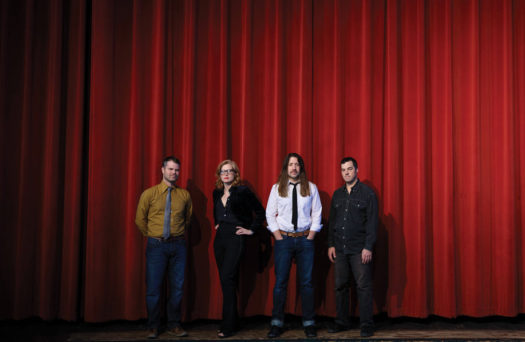
Back in 2005, guitarist Eric Olsen termed Swale “Vermont’s premiere slo-core band.” Twelve years later, this label has proven ludicrously inadequate. But it’s hard to come up with an equally pithy tagline to replace it. The quartet’s journey has taken them from their origins as a burlesque show house band recording EPs of ambient slow-burns to the sort of rock-soul-funk-pop-country hydra that can credibly cover both Sonic Youth and Tom Jones.
Not only will Swale’s third full-length record There’s No One Here easily be one of the best Vermont-made albums of the year; it’s sure to be one of the best albums period. A sprawling double-LP calls for an equally in-depth look behind the scenes, so we reached out to the band members to talk about every track.
Amanda Gustafson and Eric Olsen front the band and write most of the songs. Like the Beyoncé and Jay-Z of Vermont, the couple’s relationship informs much of Swale’s material. On There’s No One Here, songs cover a full range of life experiences, from early days of hard drugs and moshpits to more current challenges of aging and parenting (the subject of laundry crops up in two separate songs). They say nothing in the world is certain except death and taxes; Swale sings about both on this album.
To get the full story behind these songs, we spoke to Gustafson and Olsen along with Swale drummer Jeremy Frederick about every track. Read their descriptions below, then buy the album digitally – or on red vinyl! – at Bandcamp.
“Release Your Records”
Eric: I was thinking about a lot of things at once here and trying to touch on all of them. A big one is an admonishment to myself to be truthful, telling myself to release the records of my own story. It started as that, using the metaphor of vinyl records. Then there’s an age thing, using the numbers 33 and 45, like the speeds on a record, to look at where I was at those ages. I wanted to touch on regret, missed opportunity, hubris, addiction.
Some people have focused on Trump releasing his tax returns in this too. I wrote it during the primaries, so that was in there, with some lines nodding towards him being the 45th president [“Now look at you / You’re 45”]. I like that the lyrics can be taken a number of ways, but without being so abstract it turns into a random string of words.
“Loser”
Amanda: “Loser” reflects a process I think everyone goes through growing up. As you try to figure out what you want to do and how you want to spend your time, inevitably you feel you’re going nowhere. That was something I felt as I was trying to pursue music. It’s not always clear what the end is going to be and sometimes the work is hard.
I find new meaning in the lyrics constantly, even though I certainly don’t feel like a loser all the time. It just started to be funny to me how stupid it was to return to the same feeling. That thought you might have of, “That boy I like doesn’t like me, so I want to die.” How intense those feelings can be started to be funny to me.
From a musical standpoint, it’s like a musical theater song, something that might be in a Cary Grant film where people start singing and dancing. So I’m always a little embarrassed when we’re about to play it. I think, this is not cool. But then once we’re playing it, I’m totally joyful. Because I love that kind of music!
“Bird in a Cage”
Amanda: I wrote this years ago about me and Eric and about a specific time really early in our relationship. But songs we wrote fifteen years ago still mean something to me because we’re different people. I think about who we’ve become and how much I wanted something early on, which I think when you’re in a relationship for a long time is a good thing to remember.
Musicians are always saying they try to write songs that are universal. I don’t! I try to write songs that are helping me scratch an itch. You either decide to put that into songs and play them for people or you write your feelings in a journal and keep it in your room.
“Elevator”
Eric: To me, that’s a really special song Amanda wrote. It speaks to something that doesn’t get talked about enough, especially in the framework of pop-rock. That first line is terrifying [“You terrified me in an elevator / You kiss me now, but will you strangle me later?”]. But it’s also a sweet eighties pop jam, and the contrast of that with the lyrics is powerful. There’s a world somewhere where this is a pop hit.
Amanda: I’m trying to explore some of the experiences a lot of women have had. There’s almost no woman I know who hasn’t had some experience where she felt unsafe or taken advantage of or hurt or abused. Literally 100% of the women in my life. And it’s not like I’m seeking out some special group – this is the case everywhere.
I’ve written songs in the past about women’s issues and they’ve always felt really heavy because that was how I was feeling. I had some experiences in my own life that I felt like I was supposed to be ashamed of. If I was going to express this feeling, I felt I had to show all this anger.
But my anger eventually turned. Like, I don’t have to even give you my anger any more. And because I feel less angry, I think it makes the music come out less angry.
Eric: At one point I was listening to this with our producer and he assumed it must be about me. He made a comment to the effect of like, “Wow, I’m glad you guys are in a better place now.” Then I was like, “Good lord, is this about me??” Luckily it wasn’t.
“Drug Laws”
Eric: I don’t think I initially started writing like a laundry list of my personal drug incidents. Where I started was talking about being older and being different. The joke of the song is that back when you were a mudslide of a shitshow, you might have been cooler. It’s nostalgia for a time that fucking sucked, someone pleading to prove they were cool: “Did I mention that I did time??” It seems absurdist to me, someone wanting people to see them through that lens. Like the lyric “You should have seen me then / Don’t look at me now.” Now, I’m a good citizen. No one wants to write about that. They want to write about a hot mess.
I did buy dope in Mexico and now I am buying bulk in Costco. Both sides of that lyric are truthful. But I don’t think for a second I would actually ask a question like “I don’t know which one is worse, shop in a box or drop in a hearse.” I don’t feel that way! Of course I know which is worse! I can confidently say, no, it’s not worse pushing a shopping cart around. But the debacles of another time can be more interesting to talk about.
“Felon”
Amanda: When I sing that song, I think about a woman who’s in a difficult situation and is struggling to get by and hold the pieces together. I think about why it’s worth getting up every day for a person that maybe other people wouldn’t get up for.
Eric’s been pretty open about his past, with drugs and alcohol and addiction. When we got together, my friends weren’t exactly high-fiving me. But my love for him went really deep, even in the midst of a difficult time, and that’s what I wanted to write about.
“Safe to Say”
Jeremy: I wrote “Safe to Say” after the loss of a family member to suicide. Broadly speaking, the song is about the daily battles that we all carry in our lives, particularly those battles that came from our childhood and determine our day to day decisions. Even though I wrote it back in 2009, I do think that it aligns with one of the underlying threads of this record, which is maintaining grace amidst life’s ups and downs.
The band all took what I showed them and made it their own, which is 100 times better than what I came up with. Eric put acoustic guitar right at the top of the song where I originally went heavier with electric guitar. It makes the whole thing a bit more reserved. Tyler [Bolles, bass] somehow gets these great licks in without straying too far up the neck. Amanda’s Wurlitzer part all throughout the versus of the song has a tremolo that I love, plus her harmony is all her own.
Drumming has been a part of my life since I was very young, but I actually write most of my music on the acoustic guitar or piano. My drum parts often come later. I have a lot of respect for drummers who can just play to the song. What the world needs now is fewer drum solos!
“All Down Tonight”
Eric: This is about me and Amanda, sort of. It’s a reminder to myself. In any relationship, you gotta work to make it work. If one isn’t careful, relationships can slide into things where you’re just going through the motions. You don’t fall in love with someone just to go through the motions.
We both work, we have other projects, we have kids, we have this band we play in together. So sometimes we’re fucking flying all the time. You wake up and it’s like go-go-go and then you go to bed. And you realize you haven’t talked or done anything for each other all day. You gotta fertilize the thing in order to make it stay healthy.
I often think about the line about drowning in clothes. Because once you have kids, there is endless laundry. You don’t even know where it’s all coming from. There is constant folding and sorting and piles on the couch. I guess that makes this literal dad-rock.
“Rough Dancing”
Eric: This song, sans lyrics, Jeremy and I have been playing for a long time in practice. It’s like a riff-athon, finding the joy of inverting classic rock tropes. I love that kind of music, but I also like to dissect it, kick it around a bit. The group-scream of “And I know!” is our Gene Simmons moment.
The title is what our oldest daughter used to call moshing, being in the pit. For a long time we toyed with releasing a record that was just dance music. Not R&B pop, but like danceable music in all genres. The whole thing was going to be called Rough Dancing. So we’ve had that name for a long time.
“Wooden Heart”
Eric: This is first Swale song we ever wrote, 15 years ago. We tried to record it a few times, it just didn’t work before. Then on this new record it went from, “Why bother this never works” to “Okay, I think it’s maybe working” to “Oh damn look at this!”
One night I was in the studio with Ryan [Power, producer] and Kal from Rubblebucket. We were just talking that it might be fun to put sax on here. And she was like, yeah let me play some slapback sax. She did it in one take. We all loved it so much that we made a different version of her sax solo the opening instrumental track.
Amanda: We’d stopped playing this for years then revived it recently. Eric and I sing the opposite phrase to each other so it harmonizes each time. My first line I’m a third above him and he’s a third below, and then on the next we swap. That was something that happened really naturally and it’s always been special to me about our musical relationship. We’re a partnership and listening to each other.
When we first got together, we used to go up into his attic where he had recording stuff. He was so prolific and writing so much that things weren’t getting finished. I remember one day we were rehearsing and I just said, “I’m going to go write the words now.” At the time we were playing some songs that were his plus some older songs of mine. I wanted to help him finish it so we had a song that was ours.
“Learn By Going”
Eric: This instrumental comes from the same 30-minute improvisation as the final track [instrumental “Here’s Where You Were”]. Editing it down was like killing your darlings. There are giant chunks of that long improvisation that I love, but might not have been appropriate for the record. It took a lot for me to let go of the other passages, but one reason we have a producer is to help us dial things back. If left to our own devices, this might be a long album of ambient jams.
“Every Last One of Us”
Eric: I like that the line [“We could all be that way,” the only lyric in the nine-minute song] is a pretty simple statement, but it could mean something either good and bad. There’s either an aspirational way we could all be or a universal empathy of “Oh man, you really did that? Well, we can all be that way.”
The mantra-like repetition of the line becomes meditative. There’s a reverse bell curve I think in terms of audience enjoyment. The listener starts off like “Oh cool,” then they get to this point where it’s like “Oh my god, really, still?” And then you push past that. That’s the key. You remain firm, and then it becomes something ecstatic. Once you push past that, miracles happen.
“Burnt Anchor”
Eric: Bernt Anker Olsen was my grandfather, a Norwegian sailor. The song is sung from his point of view. I wrote it after he passed away in 2002. I think he had had enough and just called it quits in a nursing home in his mid-90s.
I didn’t introduce it to the band until we were already recording this album. At the time, I didn’t see some of the themes I now see in the album. This song plays a big part in that. It’s the natural end of the arc of the album. It’s no coincidence that this song blends into an instrumental meditation about remembering that which is no longer.
Watch Swale’s “Drug Laws” video here, then buy the complete ‘There’s No One Here’ on Bandcamp. Then click here to discover more of the best new rock music in Vermont.
The post “Literal Dad-Rock”: Swale Talks Laundry, Trump, and Aging in New Album Track-By-Track appeared first on County Tracks.
]]>The post Dancing Through Recovery in Wild AA-Themed Music Video appeared first on County Tracks.
]]>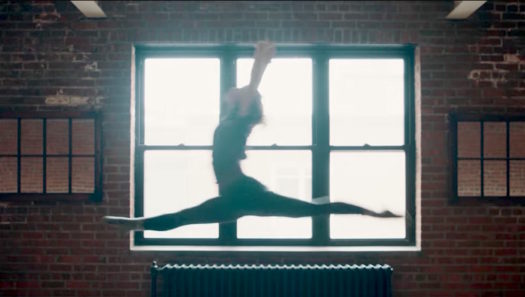
Alcoholics Anonymous meetings aren’t an obvious music-video setting; people talking in a circle hardly screams “dynamic visuals.” But most Alcoholics Anonymous meetings don’t feature an interpretive dancer.
In Vermont rock band Swale’s song “Drug Laws,” off their fantastic new album There’s No One Here, songwriter and singer Eric Olsen looks back on a darker chapter in his life: drugs, theft, jail time. But a whiff of nostalgia colors the regret. “I used to break drug laws, but now I make in-laws,” the song begins. “You wouldn’t know by looking at me that I did time for forgery and larceny. That was an awesome me.”
“I don’t think I initially started writing like a laundry list of my personal drug incidents,” Olsen says. “Where I started was talking about being older and being different. The joke of the song is that back when you were a mudslide of a shitshow, you might have been cooler. It’s nostalgia for a time that fucking sucked. Like the lyric ‘You should have seen me then / Don’t look at me now.’ Now I’m a good citizen. No one wants to write about that. They want to write about a hot mess.”
Translating that idea into a music video proved tricky. Rather than going full Trainspotting with a bunch of druggie-debauchery set pieces, director Nate Beaman conceived of a surreal AA meeting where an interpretive dancer leaps out of the circle.
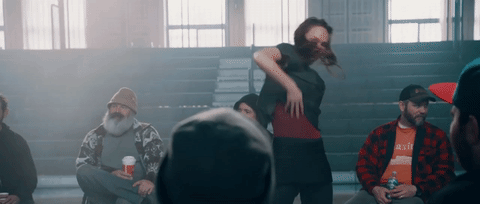
“I was struck by the description in the lyrics of a sober life feeling empty and mundane,” says the video’s star, ballerina Megan Stearns. “That would make me feel angry, because here I was playing by the rules but still not feeling like I was getting anything out of life. I used turns/spinning in the choreography to convey a feeling of being disoriented, and not knowing which life path to take. I used sharp movements to convey anger, contracted shapes (curling my body) to convey helplessness, and backward bends to show that old wild side wanting to come out – the rebelliousness that led to non-sobriety.”
Soon that wild side breaks free of the confines of comfortable suburban life, seatbelted in the car and perusing grocery-store aisles. For the latter shoot, the crew filmed incognito. “We snuck the camera into the store in a shopping cart and scoped out an aisle that had no one shopping in it to poach the shots,” says director Beaman.
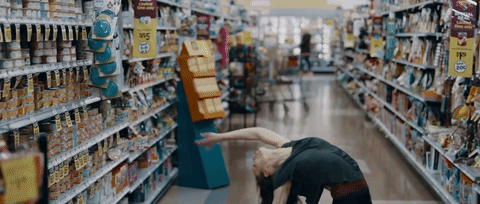
“The grocery store filming was a blast,” dancer Stearns says. “We had this giant, alien-looking camera in a shopping cart with a sweatshirt half-draped over it – I’m sure it looked more like a bomb than anything else. And I think we all got a little adrenaline rush wondering how we were going to pull this off – it reminded me of a high school prank! By the end of our time in the pet food aisle, people were starting to stop and watch; one man got on the phone to his wife to report what was happening.”
The surrealism culminates in the David Lynch-esque finale when an army of masked figures dancing in unison surrounds the protagonist.
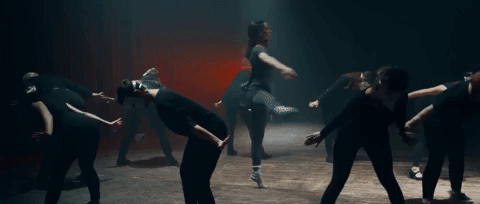
“It was inspired by Eyes Wide Shut and the idea of AA being somewhat of a society of its own,” says Beaman. “The masked dancers circling the main dancer mimics the circle of the AA meeting. When you sit and listen, you fade off into your own space, but when you participate you are exposing yourself. To me it’s everyone else hiding behind their own masks while our dancer is there being true to herself, owning up to her past, and adjusting to the changes that have come.”
It all adds up to a strange and powerful music video. Watch the full thing below, then buy Swale’s new album at Bandcamp.
Click here to discover more of the best new rock music in Vermont.
The post Dancing Through Recovery in Wild AA-Themed Music Video appeared first on County Tracks.
]]>The post The Best Vermont Music of 2017 (So Far) appeared first on County Tracks.
]]>
We’re finally at about the six-month mark at what has been a long and deeply stress-inducing year. But there’s perhaps some small comfort that 2017 has so far been a great year for music. So to celebrate being halfway through – as well as County Tracks’s own six-month birthday – we’re rounding up some of the best Vermont-made songs we’ve heard this year so far.
We narrowed the list down to a dozen for the sake of sanity, but couldn’t go without mentioning some of our other favorite tracks, which we listed at the bottom. We also rounded up as much as we could in a Spotify playlist. Enjoy!
Apartment 3 – No Feeling
Snotty and DIY as hell, the best Apartment 3 songs work like Nirvana or Pavement: half-assed on the surface but with some insanely catchy songwriting lurking beneath the slacker shrug. This was the final release by beloved local label Section Sign Records, but they went out on top.
Blowtorch – Mirror
It took punk band Blowtorch forty years to put out their first record. At a Ramones-worthy 16 songs in 35 minutes, it was worth the wait. “Mirror” is an epic jam by their standards (over two minutes long!), but Clark Russell’s snarl sells every second.
Clever Girls – Crazy
As everyone from Willie Nelson to Gnarls Barkley has learned, you can’t go wrong titling your song “Crazy.” Clever Girls’ Diane Jean (the only actual girl in the band) puts her own spin on the trope in this catchy garage-country gem, bringing a whole lot more swagger than Patsy Cline ever had.
Erin Cassels-Brown – Athena
Every superhero movie needs an origin story and maybe street buskers do too. On his standout song “Athena,” Cassels-Brown spins his tale about getting himself fired from his carpentry gig so he could pursue music full time. We’re glad he quit his day job.
Ghost Weapons – Auroras
“What if science has it wrong?” Gary Peter asks in “Auroras.” The song addresses the death of a father he had a difficult relationship with, but rather than a maudlin ballad, does so with a righteous blast of post-punk fury.
Henry Jamison – The Jacket
We wrote in February that Henry Jamison looked like Vermont’s next breakout act – and that was before he released “The Jacket,” the best track of his young career. Tender and stirring, this falsetto sway is the first taste of what may be one of the biggest local albums of the year.
J. Bengoy – So Good (I Could Die)
We argued last month that this peppy tune should be the song of the summer, and we stand by that assessment (though we wouldn’t put money on it coming true). The earworm has not left our head since we first heard it, a delicious little nugget of power-pop that’s the feel-good jam of the season.
Josh Panda – Drive You Home
Josh Panda released our #1 song of 2016, and he’s since followed it up with a full album. “Drive You Home” sounds like the sort of country-rock gem that could have aired on AM radio in the 1970s, a romantic ballad perfect for wedding first dances or slow cruising down a dusty back road.
The Pilgrims – Millennial Whoop
“You’ll never live up to the Greatest Generation!” the Pilgrims cheerfully holler in their snotty anthem for the screwed millennials. Sung from the point of view of high-and-mighty baby boomers, it’s a gleefully ironic takedown of parents bemoaning the younger generation’s laziness. Cheeky lines like “We won all the wars (the ones we lost are not our concern)” indict the entitlement of elders while standing up for underemployed 20-somethings everywhere.
Sam Morris – Left The Candle Burning
Leonard Cohen from Montreal passed last year, but Sam Morris from only-a-little-further-south ably picks up the mantle with this haunting folk song. Like Cohen’s best, the simple and understated playing hides a mesmerizing song that draws you deeper with each listen.
The Snaz – Summer Underground
The Snaz seemed to have their whole careers ahead of them when they broke up this spring – after all, they hadn’t even graduated high school yet. But they went out on top with their final album Sensitive Man, including this funky gem that quotes a popular children’s rhyme way better than Ke$ha did.
Swale – Release Your Records
Given the timing, I’d guessed from the title that “Release Your Records” would be an anti-Trump protest sound about his tax returns. Instead it concerns something far more timeless, the love of music and, specifically, the vinyl revival.
Honorable mentions:
* Amelia Devoid – Don’t Understand
* Belly Up – You’ll Never Take Me Alive
* Francesca Blanchard – My Heart
* Joey Agresta – I Feel Like Shit And I Want To Die
* Self-Portrait – Fears Are Foolish
Top photo of Swale by Brittain Shorter.
The post The Best Vermont Music of 2017 (So Far) appeared first on County Tracks.
]]>The post The Best Vermont Artists at Waking Windows (And In General) appeared first on County Tracks.
]]>
We normally don’t do concert previews here. My goal with this young blog is to spread the gospel of Vermont music to an audience beyond the state’s sometimes-confining borders. And writing about regionally-specific events generally goes against that mandate.
This weekend’s Waking Windows festival is an exception.
Waking Windows is the Vermont music scene in microcosm. In some respects the Burlington equivalent of SXSW, Waking Windows surrounds a few bigger names (Real Estate and Dan Deacon this year) with dozens of the state’s best local bands. Naming the best Vermont artists playing the festival almost doubles as naming the best Vermont artists period. And that is exactly our mandate.
And there are a lot to get through. My plan was to highlight just ten or twelve here, but the list ballooned as there were too many I couldn’t leave out. In fact, to put some limit on this thing, I excluded anyone I’ve already written about at length before. They’re all worth seeing too of course, so read their various posts to catch up:
• Apartment 3: “The Dream of the ’90s Is Alive in Apartment 3, Your New Favorite Lo-Fi Slacker Band”
• Tyler Daniel Bean: “This Music Video Hauntingly Depicts Depression Taking Over”
• Blowtorch: “Trump Inspires Reagan-Era Punk Band to Finally Release Its First Album”
• Erin Cassels-Brown: “Near-Death Experience Gives Street Busker New Purpose on Debut EP”
• Cricket Blue: “Gillian Welch Meets Annie Wilkes in a Folk Song About a Milkman Obsession”
• Ebn Ezra: “Japanese Synth-Pop and The Little Mermaid Inspire Haunting Electronic Album”
• Henry Jamison: “Vermont’s Latest Breakout Henry Jamison Gently Electrifies Gordon Lightfoot Cover”
• Hellascope & Kiefcatcher: “Four New Doom Metal EPs to Get You Through the Winter”
• The Mountain Says No: “Hear an Epic Post-Rock Song About ‘Game of Thrones’ Fandom”
• The Snaz: “America’s Best High School Band Grows Up (And Wishes You’d Stop Focusing on Their Age)”
• Swale: “A Song Celebrating Vinyl That Marc Maron Would Appreciate”
Below, find our picks for the best twenty-plus Vermont artists playing Waking Windows this weekend. But even if you’re not going to Waking Windows – even if you’ve never heard of Waking Windows – these artists are among the best the state has to offer and well worth your time.
Amelia Devoid

Devoid’s newest single “Woman Is Silence” features an image of moon on the cover, which seems appropriate – this music is spacey. Subtle beats and shimmering electronic waves back up gorgeous singing that echoes through your headphones and around your skull well after the track finishes. (And if you like her music, there’s a lot more to discover in the column she writes about other electronic and off-kilter Vermont musicians for alt-weekly Seven Days.)
Barishi
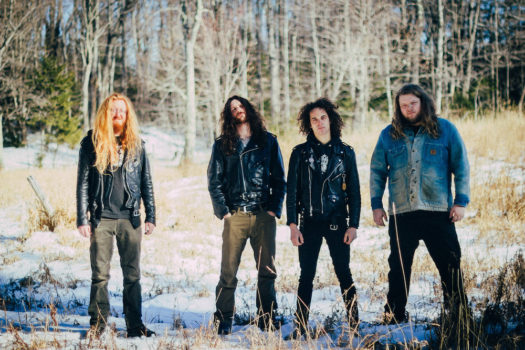
If you didn’t guess from the long hair and leather jackets, perhaps some of Barishi’s song titles will clue you into their genre: “Grave of the Creator.” “Death Moves in Silence.” “Bonesetter” (my personal favorite). Yes, Barishi are metal of the heaviest order. They combine doom riffs and the occasional throwback thrash with instrumental precision and growled vocals. Their latest music video for “The Great Ennead” features a use of animal skulls that makes Nine Inch Nails’ “Closer” seem tame by comparison.
Black Rabbit
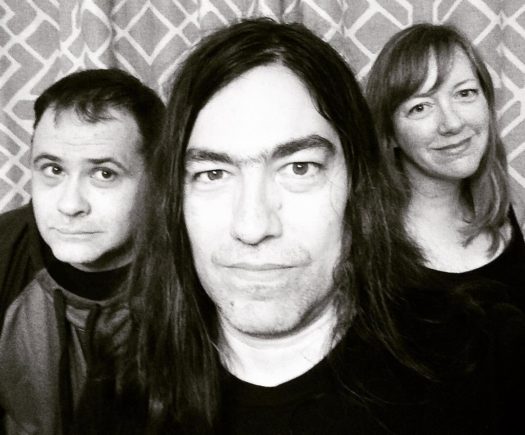
Worshipping at the church of CBGB circa 1976, Black Rabbit’s music spans the gamut of the artists who played there: early Ramones to early Blondie. “Nicky Says” sounds like a nod to the Velvet Underground’s “Candy Says,” while “It’s Cold” could be a lost Dead Boys song.
Blue Button

When Blue Button played Grace Potter’s annual festival Grand Point North last year, Seven Days wrote that they might be “the loudest band ever on the GPN stage.” The Stooges-inspired garage band certainly does know how to make a racket, but frontman Jason Cooley has a knack for writing catchy hooks that emerge from the walls of distortion.
Cam Will

Not every musician gets written up on a cemetery blog, but not many musicians have had a career quite as odd and circuitous as Cam Will. As Cameron Boyd, the New Jersey native became a child actor with a recurring role in The Sopranos and a part in the forgotten kids movie Manny & Lo alongside an 11-year old Scarlett Johansson. He burned out on acting and moved north to become a songwriter, but you can sense his background in his lyrics, where some of his verses could be short films.
The DuPont Brothers
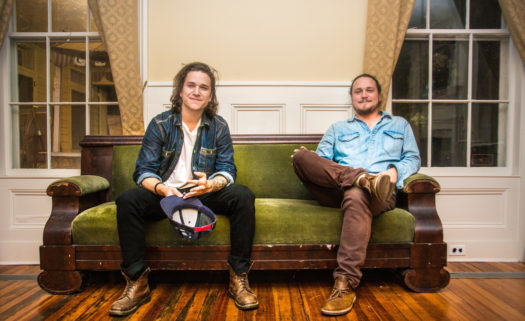
From Everly to Louvin, Americana music has a rich history of brother duos. Sam and Zack DuPont are the latest in the lineage, a pair of songwriters who began strictly in the folkie lane but have broadened their sound to incorporate touches of country and indie rock. Throughout their genre experimentation, though, their beautiful vocal harmonies keep them rooted to the brother-duo tradition.
Ellen Degenerates
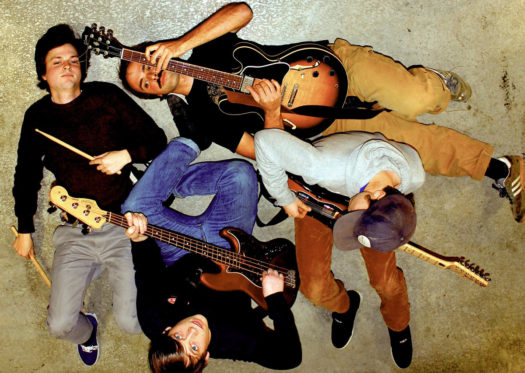
Ellen Degenerates is a great band name. So great, in fact, that two different bands are using it. Thankfully, the one playing Waking Windows is not the one that labels themselves “two-piece screamogrind.” This Ellen Degenerates is an uber-catchy indie rock band whose debut EP Staleboat features clever and often cheeky lyrics. A sample, from the song “Winnebago”: “Christopher Columbus and a New World chick / Some call him a modern hero / But he probably gave her syphilis.”
The High Breaks
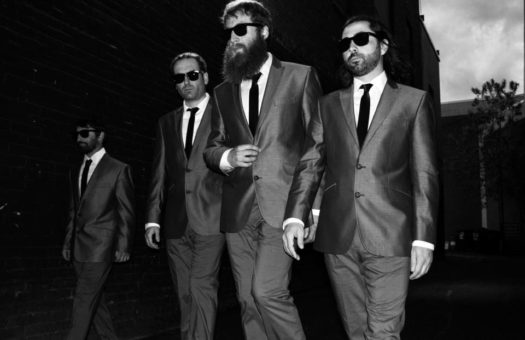
Despite being several hundred miles from the nearest ocean, Burlington, Vermont boasts not one but two of the best surf-rock bands operating today. Barbacoa are the veterans, having been on the scene playing spaghetti western-inflected surf instrumentals for decades (they share members with ’80s-era punk band Blowtorch). The High Breaks are the relative upstarts, Barbocoa’s younger, better-dressed brethren. They pay a little more fealty to the history of surf music than Barbacoa, with song titles like “Surf Showdown,” “Voodoo Wave,” or “The Big One” that sound like deep cuts from early Beach Boys album.
Iron Eyes Cody

Middlebury’s Iron Eyes Cody made my favorite album of 2016, and four months into 2017 I’m still listening to it obsessively. They make anthemic indie-rock in the vein of Edward Sharpe and the Magnetic Zeros or Decemberists that proves impossible to resist.
Ivamae

In the past year, Memphis songwriter Julien Baker has blown up everywhere from the New York Times to Pitchfork. Her sole album is only thirty minutes long though, so fans of hers would be well advised check out Burlington’s Ivamae when they’re looking for the more. Over spare and solo electric guitar, Ivamae sings haunting and ethereal songs on her debut EP Ocean Studios.
Lake Superior

A blues-rock duo from the Rust Belt, now why does that sound familiar? White Stripes and Black Keys comparisons inevitably follow Lake Superior, who began in Detroit before moving to Vermont. They’ve recently added a third member, which should help blunt the more obvious comparisons –
though the Keys do tour with more members now too – and prove they are a great band in their own right.
Michael Chorney and Holler General

Michael Chorney is the Rick Rubin of Vermont Americana, a man who lurks in the background of many of the state’s best albums. He produced Anaïs Mitchell, and helped her develop her recent New York musical version of Hadestown. He also helped polish the musical visions of the Dupont Brothers (listed above) and Maryse Smith, who would also be on this list if she hadn’t moved to Philadelphia. Chorney’s current band Holler General has released several albums that find him at his most raw, channeling old weird America sounds with delicacy and unexpected twists and turns.
Navytrain

Navytrain’s EP Souls may have been the most fully-formed debut of last year, a tight five-song package blending indie rock, country, and some seriously funky guitar picking. There’s a sense of virtuosity and tasteful jamming slightly reminiscent of the Dave Matthews Band, but without Dave’s more eye-rolling tendencies (if that’s possible). They also released some seriously beautiful live videos for each track.
Old Sky
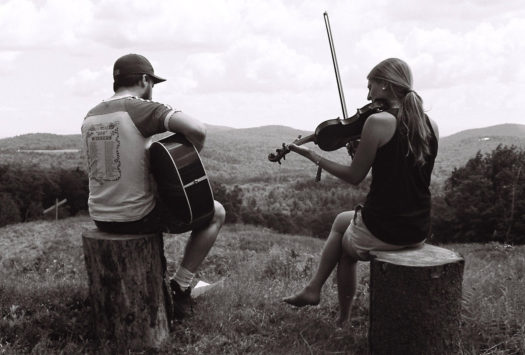
The duo of Andrew Stearns (guitar and banjo) and Shay Gestal (violin) rivals fellow duos Cricket Blue and the DuPont Brothers for prettiest harmonies in the state. They have yet to release a full-length album, but their two EPs exhibit a world of promise. “Tired Whistle” alone ranks as one of the best Vermont-made songs in recent years.
Quiltro

The two press blurbs on Quiltro’s Facebook come from Psychedelic News Today and something called Doors of Perception Magazine, which should give you an idea of the trip you’re in for. Unlike so much psychedelic rock, though, this trio’s music doesn’t feel at all aimless (or require drugs to enjoy). Speaking of psychedelia, honorable mention here to Siding Spring, who sound great in the one live video they’ve released.)
The Pilgrims
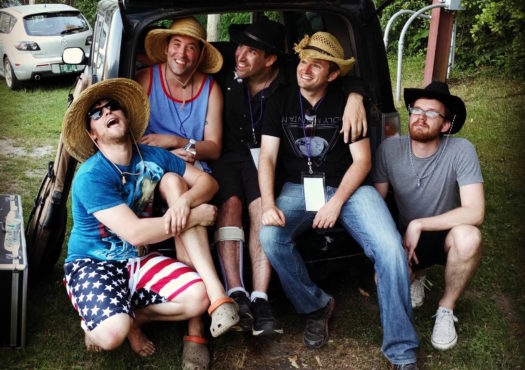
The Pilgrims’ music videos exude a distinct Tim and Eric vibe, though how much of that is deliberate irony and how much is a genuine lack of technical ability is hard to say. Even if it’s the latter, they turn a weakness into a strength with goofy, supremely low-budget animation that looks like Flash videos circa 1998. The visuals fit the sound, cheeky punk rock with titles like “Treap Chick” and “My Bad, Wrong Horse.”
Rough Francis
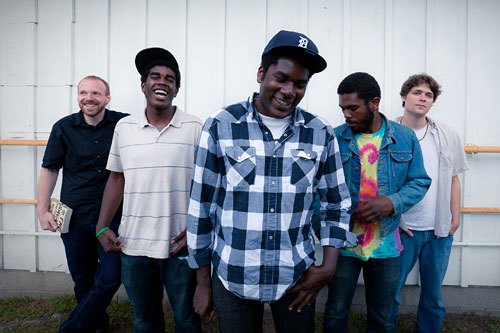
One of the few (only?) bands on this list to have their own Wikipedia page, Rough Francis are best known as the progeny of Detroit punk icons Death. But in the nine years since they formed, the younger punk band has come to stand on its own, earning writeups in SPIN and Consequence of Sound, who said “their impact on the punk scene will be felt for decades to come.”
Sleeping In
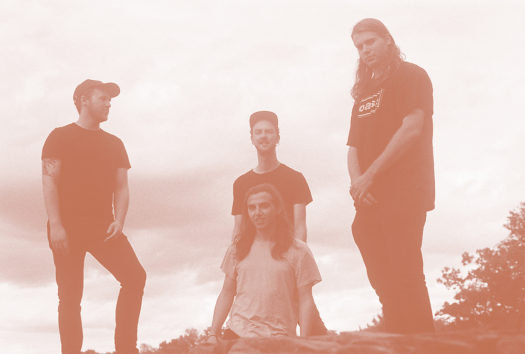
Sleeping In have a song called “Big Starr,” but you’d have to bury deep beneath waves of distortion to find any hint of Alex Chilton and co’s catchy power-pop. It’s in there, but like My Bloody Valentine or The Besnard Lakes, the melodies lie beneath a whole lot of beautiful haze.
The Smittens

A decade ago the Smittens were one of the most prolific bands in the state, but these days they mostly seem to come together once a year to play Waking Windows. Even googling “smittens” finds their website buried beneath multiple distributors of truly ugly mittens. Nevertheless, the records they have made over the years rank among Vermont’s catchiest music ever. They wear the term “twee” like a fuzzy badge of honor, hearkening back to the 1990s where cute and simple DIY love songs were not something to be looked down upon.
Some Hollow

From their press photo – bearded dudes posing in a snowy forest – you might guess Some Hollow played folksy Americana or, possibly, seriously heavy metal (see: Barishi). They do neither. This relatively new indie-rock trio at times channels Cheap Trick, at other times muscular country singers like Chris Stapleton. They draw from an array of influences, but at no point did I hear either banjos or double kick drums.
The Welterweights

The most promising newcomers on the lineup, The Welterweights haven’t actually released any recordings of their own (just the radio session below). But the four band members are all artists we love and have covered: Kelly Ravin, Erin Cassels-Brown, Lowell Thompson, and Willoughby Morse of Madaila. Bridging two generations of the Vermont’s best musicians, the band blends southern rock and country – at least in the video, we’ll see what happens once they start recording.
Willverine

The elevator pitch for Willverine is short and sweet: electronic music performed by a trumpet player. The music backs up the gimmick though, catchy and soulful pop songs with no shortage of horn solos.
Wren Kitz
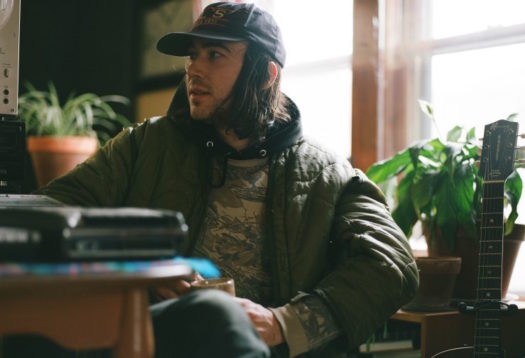
With writeups just this month from SPIN and Tiny Mix Tapes, recently-signed NNA Tapes artist Wren Kitz is poised to be one of the buzziest local acts at the festival and probably of the year. A longtime member of psych-rock band Paper Castles, Kitz’s solo stuff is quieter and stranger. He takes tape loops and found sounds and lays them under his slow, meandering melodies. It’s mesmerizing and haunting stuff, and with his NNA Tapes debut out in June, he’s someone the world will likely be hearing a lot more from soon.
That not enough music discovery for one day? Check out The Best Vermont Albums of 2016 and The Best Vermont Songs of 2016.
The post The Best Vermont Artists at Waking Windows (And In General) appeared first on County Tracks.
]]>The post A Song Celebrating Vinyl That Marc Maron Would Appreciate appeared first on County Tracks.
]]>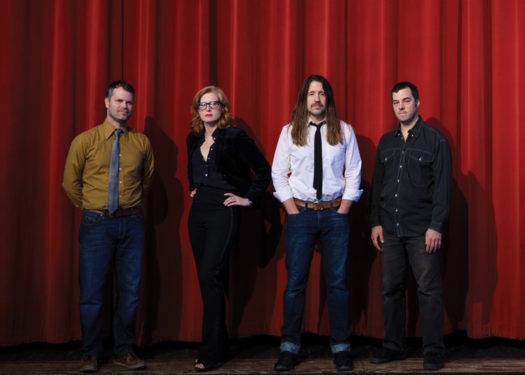
Anyone who listens to Marc Maron’s WTF podcast knows he is a vinyl obsessive. And anyone who follows him closely on Twitter will knew he is also a fan of Vermont quartet Swale (he’s shouted out both of their first two albums). So Swale’s newest track “Release Your Records” – sort of a theme song for the vinyl revival – will be right up his alley.
It will also be up the alley of any other vinyl aficionado, or really just anyone who cares passionately about music. However, Spotify users might not spot all the plays on words singer Eric Olsen packs into the lyrics. Here’s three puns in as many lines: “Spin the story of your life / Roll your sleeves and show your stripes / Deep cuts aren’t made with knives.”
The music also pays tribute to the golden age of wax, blending classic-rock swagger with a touch of Stax soul. Its release celebrates a successful Kickstarter for the band’s third album There’s No One Here, which will come out this summer digitally and – of course – on vinyl.
See how many vinyl-related puns you can spot in the lyrics:
Release your records
Tell us all about yourself
Open up and take them off the shelf
These tables they won’t turn themselvesTalk about when you were 33 and barely alive
It’s a miracle you even survived
Now look at you, you’re 45Someone said it was lost in the confusion
You can bet it cost us the revolution
You got stories to tell
You got god on your side
But no one makes it out aliveRelease your records
Spin the story of your life
Roll your sleeves and show your stripes
Deep cuts aren’t made with knivesAnd off the record
I can’t tell who’s still on track
You’ve got your songs but who’s got your back
Now look at us, we’re made of wax
Click here to discover more of the best new rock music from Vermont.
The post A Song Celebrating Vinyl That Marc Maron Would Appreciate appeared first on County Tracks.
]]>